Intro & Interview by Tom Ianelli
Headline & Strapline Photos by Greg Navarro
All Other Photos by Full Bleed Archive [Credited Underneath]
Ten years ago, to try and make his love for New York skateboarding translatable, Alex Corporan (with the help of Ivory Serra and Andre Razo) published Full Bleed: New York City Skate Photography, a hefty book of photos with no text, chronology or page numbers.
When you open Full Bleed, each photo has such strong associations and connections that a story starts to develop as you turn the pages. This story is aggressive and brutal one moment, then tender and communal the next. There are instances of grief, elation, spontaneity and triumph, but whether you pore over every image, or passingly look at a page or two, the book most effectively serves as a reminder that New York City is constantly redefining itself, and that the only way to make the most of it is to walk out your door and live in it, preferably with a skateboard in hand.
This month, Alex is publishing a 10th anniversary edition of Full Bleed with 96 extra pages and an introduction by Tony Hawk. I sat down with him to chat about his extensive skate history and get his take on the 10th anniversary reissue.
You’re a downtown guy, but you’re from uptown, right?
I grew up in Washington Heights and my crew was all uptown kids. I grew up with Freddy Valerio, Gizmo, Justin Pierce, Loki, Mike Hernandez, and a bunch of others. We called ourselves SES posse, which was the “Sleep, Eat and Skate” posse. We were so young so it felt cool to be in a crew. We would meet up at my house on 186th street, hit the hills a little, and then skate Bennett Park and Fort Tryon Park. But in less than a year, we started venturing down to the Harlem Banks and soon enough we found out about the Brooklyn Banks, which was where everyone came together from all the boroughs.
It didn’t seem like the Brooklyn Banks belonged to any single crew like some spots.
It was almost too perfect for any one group. We showed up from uptown and were amazed like, “How is this here?” I would see perfect ramps in magazines, but they’re all in California. It was a given that we were never going to have anything that good. But then you go downtown, and, like magic, there was this perfect brick wave that looked like it was built for skateboarding and, on top of that, there were all these other skaters.
There are great photos of the Brooklyn Banks in Full Bleed. Can you tell me about the Rodney Smith photo of him trying to grab the guy’s tail?
Rodney did this thing called chase the tail and would do that to everyone: go right behind you and try to grab your tail. Rodney’s energy was always to skate fast and do a lot of carving and look good doing it. They always seemed so much older to me; Bruno Musso, Rodney Smith, and Big Jim seemed like giants. We’re only like three years apart, but back then they seemed like full-grown men to me.
Rodney Smith and Mike Kepper by Bryce Kanights, 1989
Do you have a favorite photo at the Banks?
The Ryan Hickey Zoo York ad where he’s doing the frontside flip over the barrier and his legs are all weird and crooked, but you know he’s landing it. You know he caught that shit and rolled away, and the ad was just magical. Hickey was the king.
You were involved with a shop called ODs, how did that play into your early days skating in the city?
ODs started in Washington Heights. My friends Ozzie and David opened a shop in Dave’s apartment on 189th and eventually moved it to 38th street between 10th and 11th and that was the introduction to the family. Huf, Keenan, my boy Justin Stacks and a bunch of other people were there every day. That was the midtown crew clubhouse. I never worked there, but Ozzie and Dave gave us carte blanche. That’s right when I met Keenan, because we would go to the Harlem banks together — must have been ‘88.
“They made an alliance and each building got Rottweilers just for the skateboarders, so at midnight they would come out and chase us with these dogs, and soon enough, every building had one.”
What are the Harlem Banks?
There are photos of it in the book. Jeremy Henderson is doing a frontside rock and roll on it. That spot was gnarly. They would throw bottles and shoot at you up there. You had to be fast — in and out — but that spot died a long time ago. To survive the Harlem Banks was always a story. There’s a photo of Hensley at the Harlem Banks doing a stalefish, and you can see on the floor that’s all glass. It was not welcoming.
Matt Hensley By Bill Thomas, 1989
Huf once said in an interview how much banks and transition skating figured into the architecture of midtown back then. Do you remember that?
Midtown was amazing, there were endless spots around, and we had it figured out. We would go at night and have so much to ourselves, but even then, security guards held it down and they were really gung-ho because skateboarding wasn’t cool. They felt like they could bully us. They would fight us. At one point, they made an alliance and each building got Rottweilers just for the skateboarders, so at midnight they would come out and chase us with these dogs, and soon enough, every building had one.
I don’t know how the fuck that happened, but that’s a true New York story. Really, no one on the street liked us back then, so on top of the hostility, it wasn’t like girls were into what we were doing. Everyone thought it was lame or annoying. The only way we were accepted was by going to Avenue A, to the bars around there where the hardcore and punk scenes were going. Or the club scene — which was, again — a scene that was so taboo. But we fit in because we were all misfits.
“When they did the New York segment in magazines, they never quite captured the energy right.”
You can see the hostility in that photo with Mike Hernandez and the guy with the hammer.
You can tell Mike is just trying to skate and this guy comes in all pissed. You can see in Mike’s face, he’s like, “What about my skating bothers you so much?” It’s one of those things we’re always going to get: people saying “You’re gonna break your leg” and then we respond saying “Why do you care? Are you gonna take me to the hospital? Keep it moving.” But the security got away with anything. It’s not quite the same nowadays.
Mike Hernandez by Dennis McGrath, 1990s
There’s something special about the photos because, for a lot of them, we will never get the full footage or explanation. They give a glimpse of a moment in just one small window.
Exactly, and all those midtown photos were caught in such hectic moments. There was never a session at the spot with the whole set up: the camera, the videographer, the lights. It was 10 minutes, 15 minutes. You already had in mind what you wanted to do. You would practice at the Banks or the Seaport, and then show up at the Snapple Bank or some place and get your trick.
The Snapple Bank?
It was this tiny bank in front of a store where you could get Snapple for the first time. We would skate there, and people would walk by and look at us with so much confusion and anger, and really that’s the reason Full Bleed came to be. It stemmed from being around people that don’t skate. They see us hucking ourselves around, getting in the way, but I wanted people to see what it is we do in the city, and pictures were the best way to showcase that. Photography is my other passion, and I want people to understand why my photographer friends were on the ground throwing away rolls and rolls of film trying to get the perfect shot. Sammy Glucksman, Reda, Spike Jones — they spent their life on the floor basically throwing away money that they weren’t going to get back because of how rare the right shot was.
“I would rather someone respond by saying ‘What the fuck is this?’ than just being stoked on an image of someone doing a good kickflip.”
Did you as the skaters understand what the photographers were doing?
We had so much respect for the work they were doing. That’s what attracted me to do the book, too. When they did the New York segment in magazines, they never quite captured the energy right. There was a lot of excitement when Jamal Simmons got the cover of Transworld — which Spike Jonze shot and it’s in the book — but on the cover there are these big white borders, and the image is covered by text and the big Transworld title.
I wanted the images alone because it shows how well the city compliments skateboarding. Like the photo of Eli hitting the tree: a person walking by would be like what is he doing? But in the photo, his expression, and the energy, it’s just so raw. There was no comfort zone, and you can see it in his face. There’s a thousand people walking back and forth, the photographer’s gotta be in the right place, there was nothing chill about any of the situations and it comes through in the images.
Like the photo of Ryan Hickey going over the bar with that agro face, that energy that he has. Man, Ryan Hickey is one of my favorite skateboarders from New York City; he had the best frontside flips on the east coast.
Eli Gesner by Bill Thomas, 1989
Ryan Hickey by Tobin Yelland, 1990s
I would say that the unifying factor of the photos in the book is that there’s some sort of attitude.
Going through all those photos and with Andre [Razzo] and Ivory [Serra] was a blessing. It was hard to pick out partners because I was doing it for myself for two or three years, but then I realized how big the project was and knew I needed help.
The first list was 71 photographers. The list is now 90 photographers and I needed help from people that weren’t jaded or biased. A lot of people thought I was doing a Supreme and friends only kind of book, but that’s not it at all. I wanted to show the energy of skateboarding and Andre and Ivory — those guys are angels — and they got the vision right away.
What’s the story with the cover?
It’s Bruno Musso with a JFA board, a photo that Pepe Torres shot. Apparently, Bruno couldn’t get into CBGBs, so they went and shot this photo around the corner.
I didn’t want it to be a typical skateboard magazine cover saying, “This is skating.” The whole book is about the stories behind the photos, and I wanted the cover to be mysterious in that way. I would rather someone respond by saying “What the fuck is this?” than just being stoked on an image of someone doing a good kickflip.
I like how some photos you can’t tell if they were taken in ’91 or 2021. Like the Tompkins photo.
I love that photo because it shows that it’s the same now as ever. I didn’t want the way we know skateboarding to get in the way of the fun that’s understandable for everyone.
Tompkins Kids Garbage Can by Sally Penn
Joey Alvarez by Sam Glucksman, 1990s
A book I like called Ways of Seeing by John Berger has these essays that are all images, and it makes the argument that words can distract from the story that artwork and images tell on their own, and Full Bleed reminds me of those essays.
That’s why I called the book Full Bleed. I didn’t want page numbers, text, or any chronological order. I want you to go through the book back and forth, over and over. More than anything, it’s a feeling that I want to get across, and with no text or order, that feeling is more immediate. It keeps the book new each time you open it. It’s been ten years since I published the first edition and people still tell me that each time they look inside, they find something they hadn’t noticed before. I mean, still my favorite photo in the book is the one that Bryce Kanights shot of all the Shut guys on the Central Park steps.
Shut Crew by Bryce Kanights, 1980s
What was it like to get Tony Hawk to do the introduction on the reissue?
My new publisher, Salamander Street Books from London, thought it would be cool to get an intro from Tony. I’ve hung out with Tony a couple times, but he’s almost like Kareem Campbell — like you don’t know if he changes his number every year. I had to figure out how to approach him, and Bruno Musso helped me get him to do it.
He didn’t know what to write, so I told him to just write whatever it is about New York that inspires him, and man he wrote such a beautiful intro. I respect Tony so much. I think that for him to have been here from day one, and changed the game so many times, and still not be a dick is amazing. Honestly, the book is an homage to him, a way to say thank you for this. My first skateboard was a Tony Hawk board. None of it would have happened without Tony.
Andy Kessler is in the book a lot. Did you know him?
I knew Andy of course. He was so funny when I was making Full Bleed the first time. He wanted to police my book, but he just cared a lot about the content. I have so much love for Andy. He had to go through his dark period, but he came back so strong and really gave back.
Andy Kessler by Jessica Bard, 1983
Because I wasn’t around to witness it, Andy has a kind of mystical air. There are only small glimpses of what he’s done but they’re all so rad.
He was always just out for the feeling. He loved riding his skateboard, that was what it came down to, and that’s the most relatable part about skating. Like when I would escape into the hills in the Heights and just bomb down to the train by myself, catching a green light and just blazing. If you take skating for what it is, it can bring you the best joy in life.
“They spent their life on the floor basically throwing away money that they weren’t going to get back because of how rare the right shot was.”
The first edition came out ten years ago, does it feel different publishing it now than it did then?
It felt like good timing in 2011 and it feels like good timing now. So much has changed, but I’m happy that I get to show this to the world again. I feel lucky to be able to share this with friends and people I haven’t met. I never want to be jaded. I want to think about what’s next, and what I can do to keep the dream alive. I want to keep the energy from the book alive in the streets, and this is the way I know how to do that.
Order the Full Bleed 10th Anniversary book at Full Bleed webstore ♥

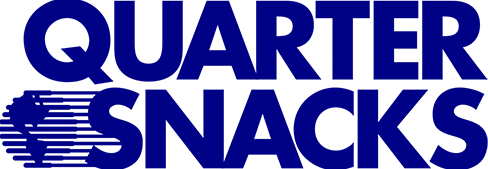




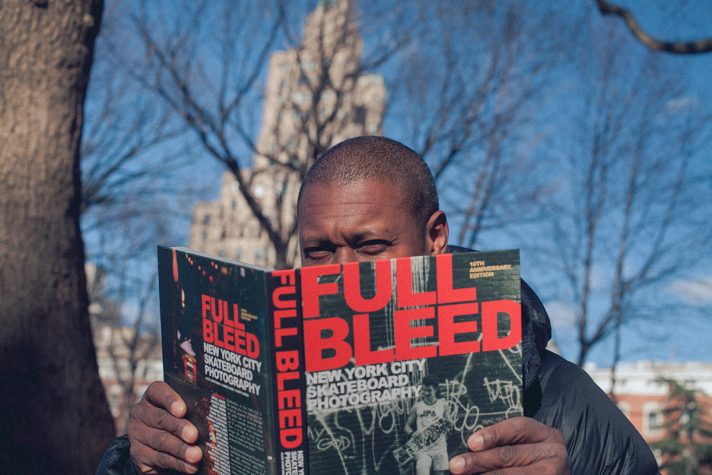
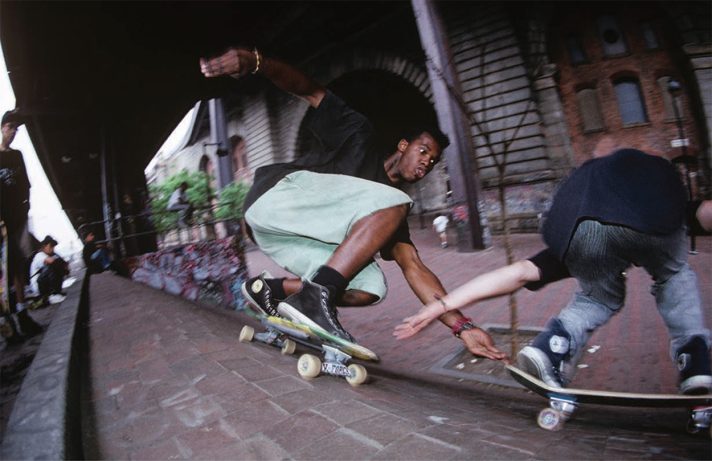
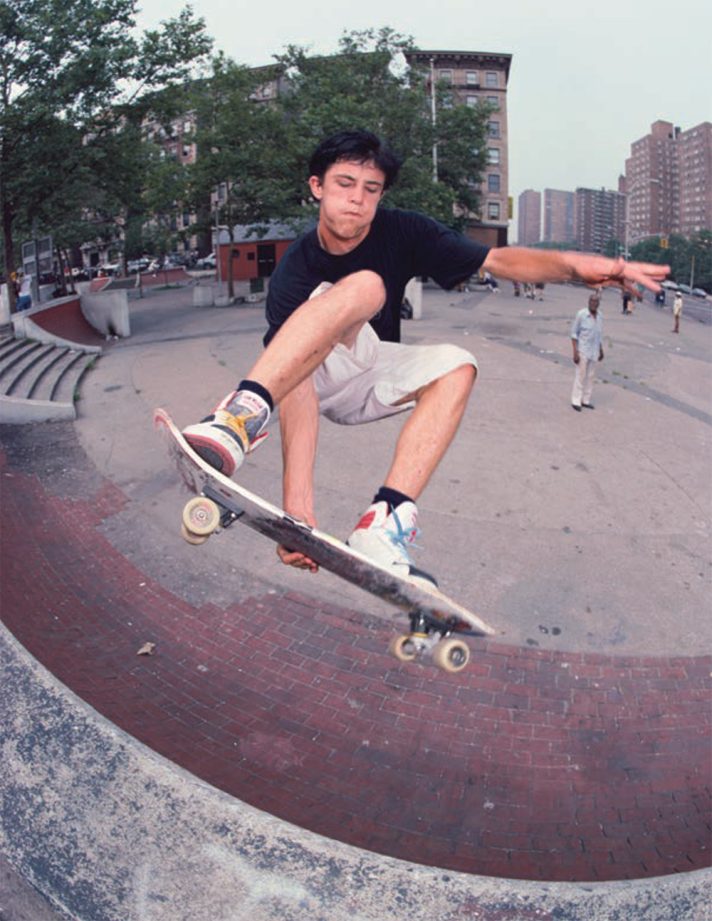
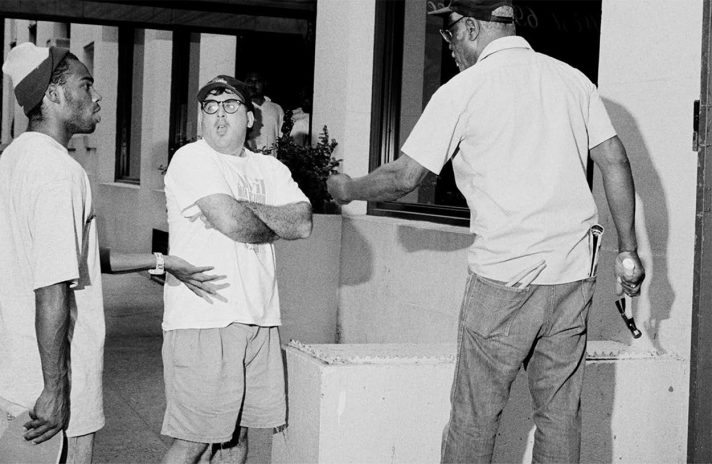
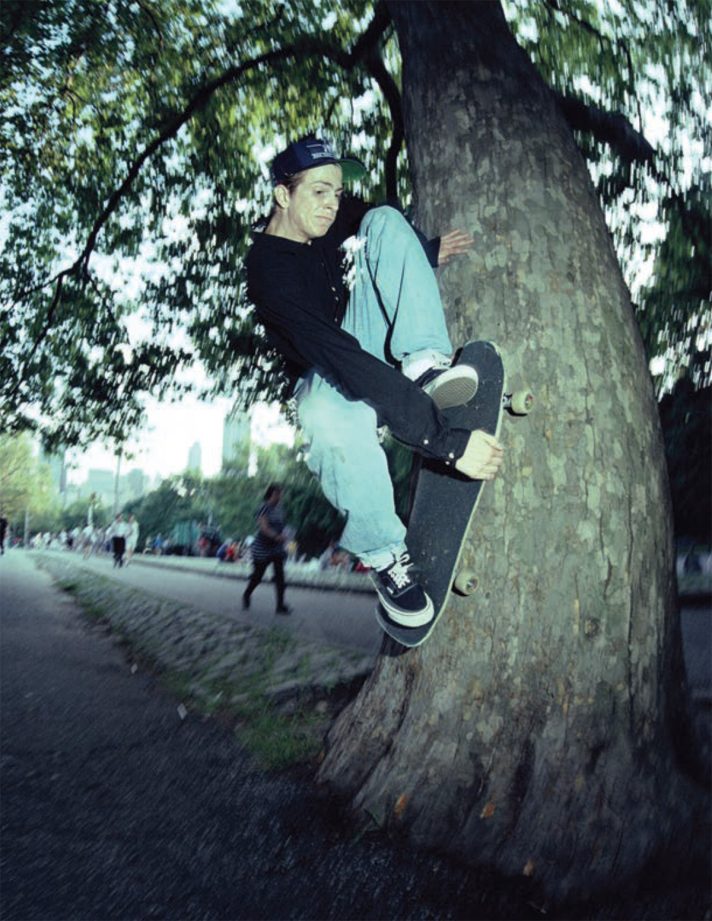
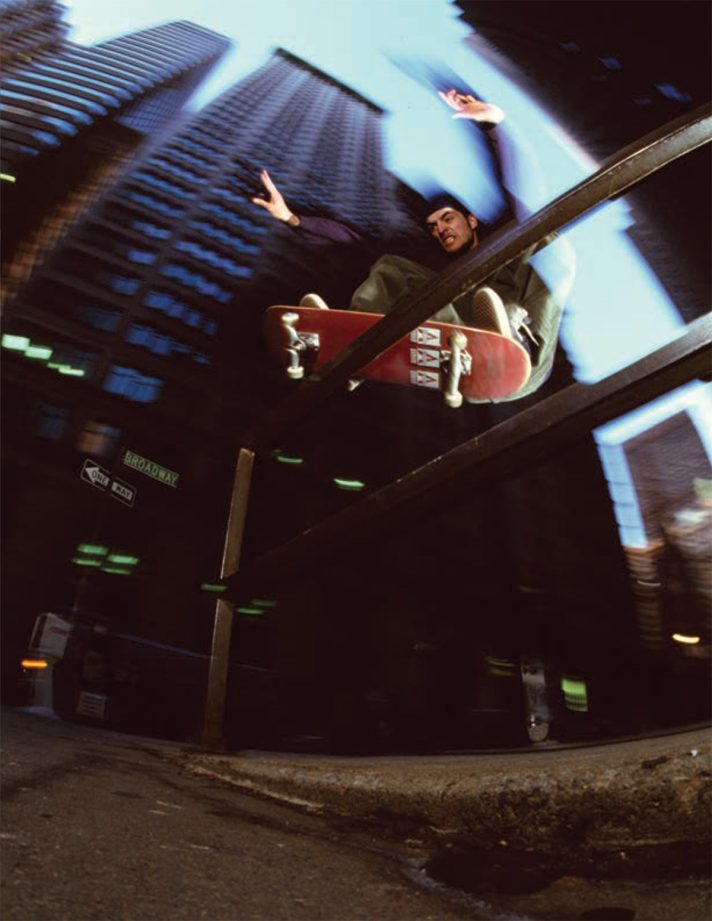

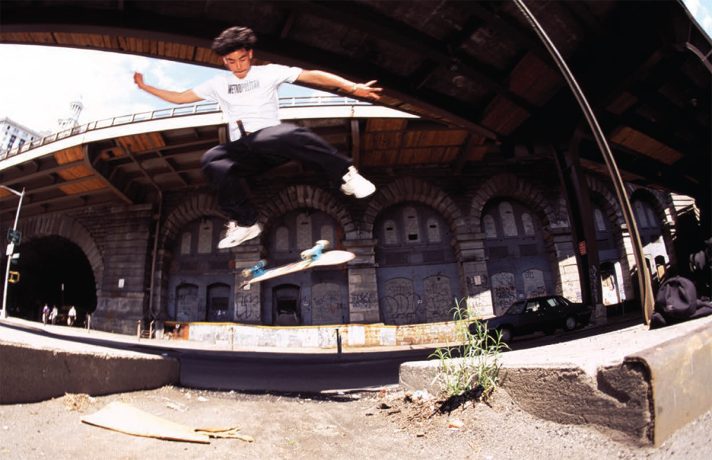
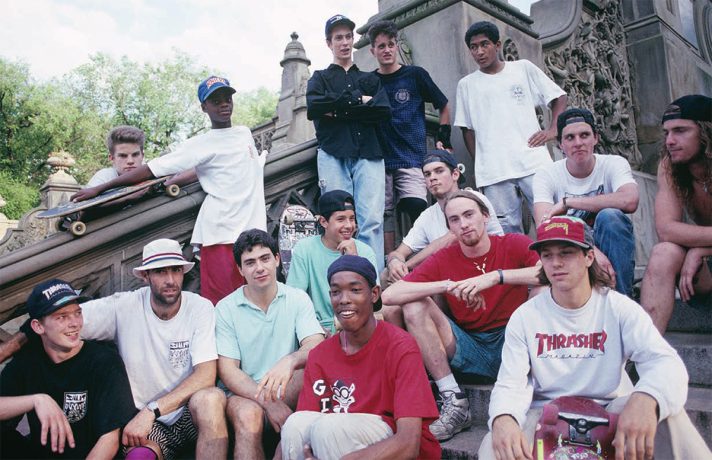
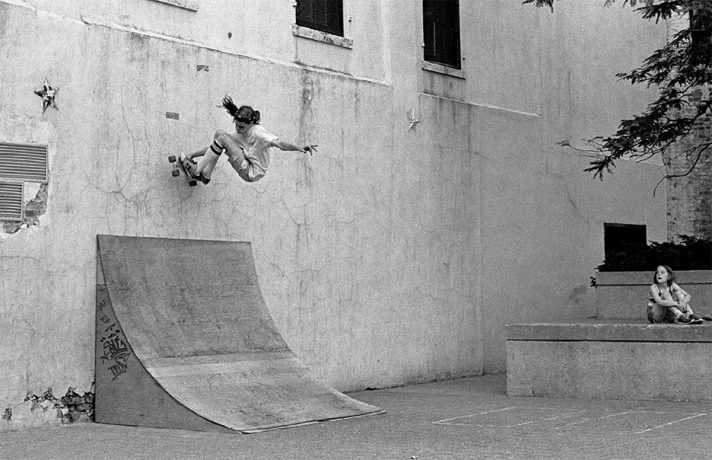
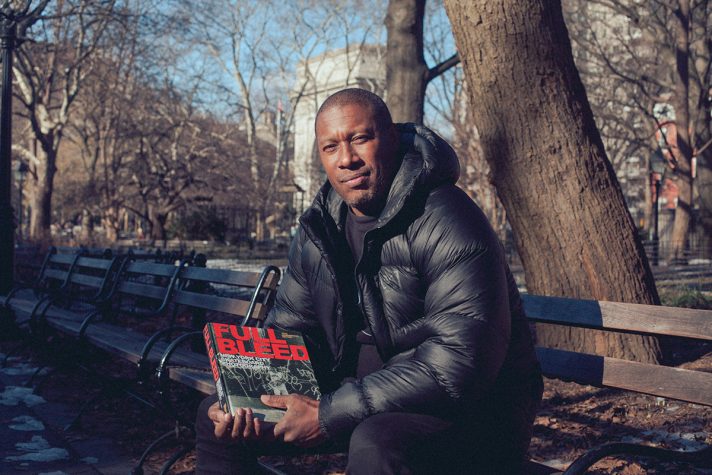
That Kessler photo is amazing and its at that famous spot over the planter too.
Good read. I appreciate Alex’s attitude. Too common for so many New York residents to be Supreme only or gatekeepers of cool, but guy just wants to show the whole truth and I’m down.
Stay positive, man! It’s clearly possible